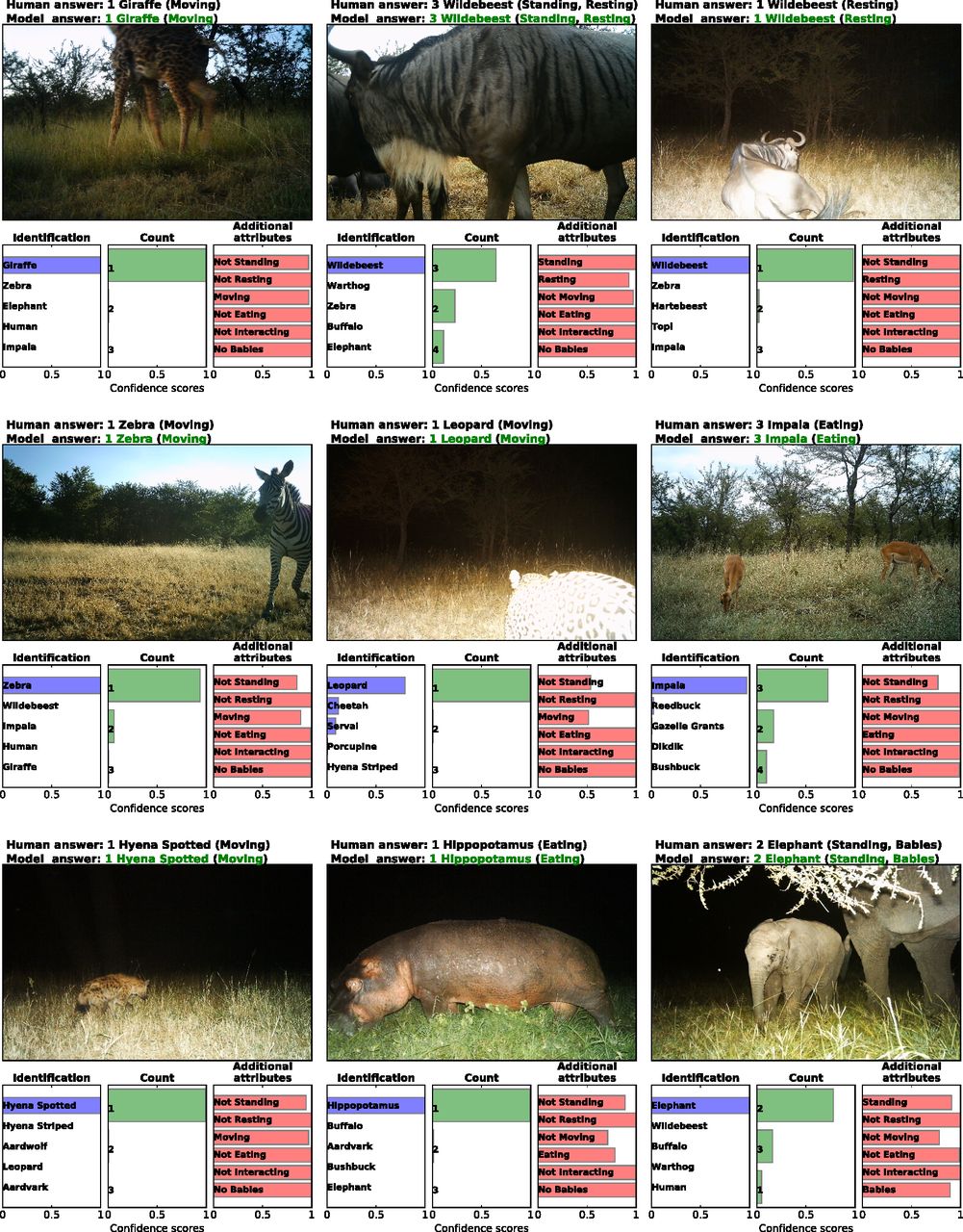AI helps study animals in Africa

From any electric kettle connected to the Internet, one can hear about how AI wins against e-sportsmen, gives new opportunities to old technologies and draws cats according to your sketch. But the fact that the machine mind also manages to take care of the environment is less common. Cloud4Y has decided to correct this omission.
Let's talk about the most interesting projects that are being implemented in Africa.
DeepMind tracks Serengeti herds

For the past 10 years, biologists, ecologists and voluntary conservationists have collected and analyzed data from hundreds of field cameras located in Serengeti National Park (Tanzania) as part of the Serengeti Lion Research program. This is necessary to study the behavior of some species of animals whose existence is in danger. To process information by studying demographics, movements, and other markers of animal activity, volunteers spent a whole year. AI DeepMind is already doing this job for 9 months.
DeepMind is a UK-based artificial intelligence technology company. In 2014, Alphabet was purchased. Using the Snapshot Serengeti dataset to train an artificial intelligence model, the scientific team achieved excellent results: AI DeepMind can automatically detect, identify and count African animals in pictures, making its work 3 months faster. Why is this important, DeepMind employees explain:
“The Serengeti is one of the last remaining places in the world where the pristine community of large mammals is located ... As the human invasion around the park becomes more intense, these species are forced to change their behavior in order to survive. Growing agriculture, poaching, and climate anomalies are contributing to changes in animal behavior and population dynamics, but these changes have occurred on a spatial and temporal scale that are difficult to control using traditional research methods. ”Why is artificial intelligence more effective than biological? There are several reasons for this.
- More photos are involved . Since installation, field cameras have captured several hundred million images. Not all of them are easy to recognize, so volunteers have to manually identify the species using a web tool called Zooniverse. The database now has 50 different types, but it takes too much time to process the data. As a result, not all photographs are used in the work.
- Fast species recognition . The company claims that their pre-trained system, which will soon be deployed in the field, is able to work on a par with (or even better) human annotators by remembering and recognizing more than a hundred species of animals living in the region.
- Cheap equipment . AI DeepMind is able to work effectively on "modest" equipment with unreliable Internet access, which is especially true for the African continent, where a powerful computer and fast Internet access can be devastating to wildlife and overly expensive to deploy. Biosafety and cost savings are important AI benefits for eco-activists.

It is expected that DeepMind's machine learning system will not only be able to closely monitor the behavior and distribution of the population, but also provide data fast enough so that environmentalists can respond in a timely manner to short-term changes in the behavior of Serengeti animals.
Microsoft is following elephants

In fairness, we note that DeepMind is not the only company that has taken care of saving fragile populations of wild animals. So, Microsoft checked into Santa Cruz with its startup, Conservation Metrics , which uses AI to track African savannah elephants.
A startup within the framework of the Elephant Listening Project, with the help of the Cornell University laboratory, has developed a system capable of collecting and analyzing data from acoustic sensors scattered throughout the Nuabale Ndoka National Park and adjacent forest areas in the Republic of Congo. Artificial intelligence recognizes the voice of elephants on records - low-frequency rumbling sounds that they use to communicate with each other, and receives information about the number of the herd and the direction of its movement. According to Matthew McCone, Conservation Metrics CEO, artificial intelligence is able to accurately identify individual animals that cannot be seen from the air.
Interestingly, thanks to this project, a machine learning algorithm was developed, trained at Snapshot Serengeti, which can identify, describe and count wildlife with an accuracy of 96.6%.
TrailGuard Resolve warns of poachers
Intel-based smart camera uses AI to protect endangered African wildlife poachers. The peculiarity of this system is that it warns of attempts to kill animals in advance.
The cameras located in the park use the Intel computer vision processor (Movidius Myriad 2), which can detect animals, people and vehicles in real time, which allows park rangers to intercept poachers until they do business.
The new technology that Resolve came up with promises to be more efficient than conventional detection sensors. Anti-poaching cameras send alerts whenever they detect movement, which leads to many false positives and limits battery life to four weeks. TrailGuard uses motion only to wake up the camera and sends alerts only when it sees people in the frame. This means that there will be significantly less false positives.
In addition, the Resolve camera practically does not consume power in standby mode and can work up to a year and a half without recharging. In other words, park staff will not have to risk their safety as often as before. The camera itself is the size of a pencil, which reduces the likelihood that poachers will find it.
What else is useful to read on the Cloud4Y blog
→ vGPU - use cannot be ignored
→ Beer intelligence - AI comes up with beer
→ 4 ways to save on backups in the cloud
→ 5 Best Kubernetes Distributions
→ Robots and strawberries: how AI increases field yields
Subscribe to our Telegram channel so as not to miss another article! We write no more than twice a week and only on business.
All Articles